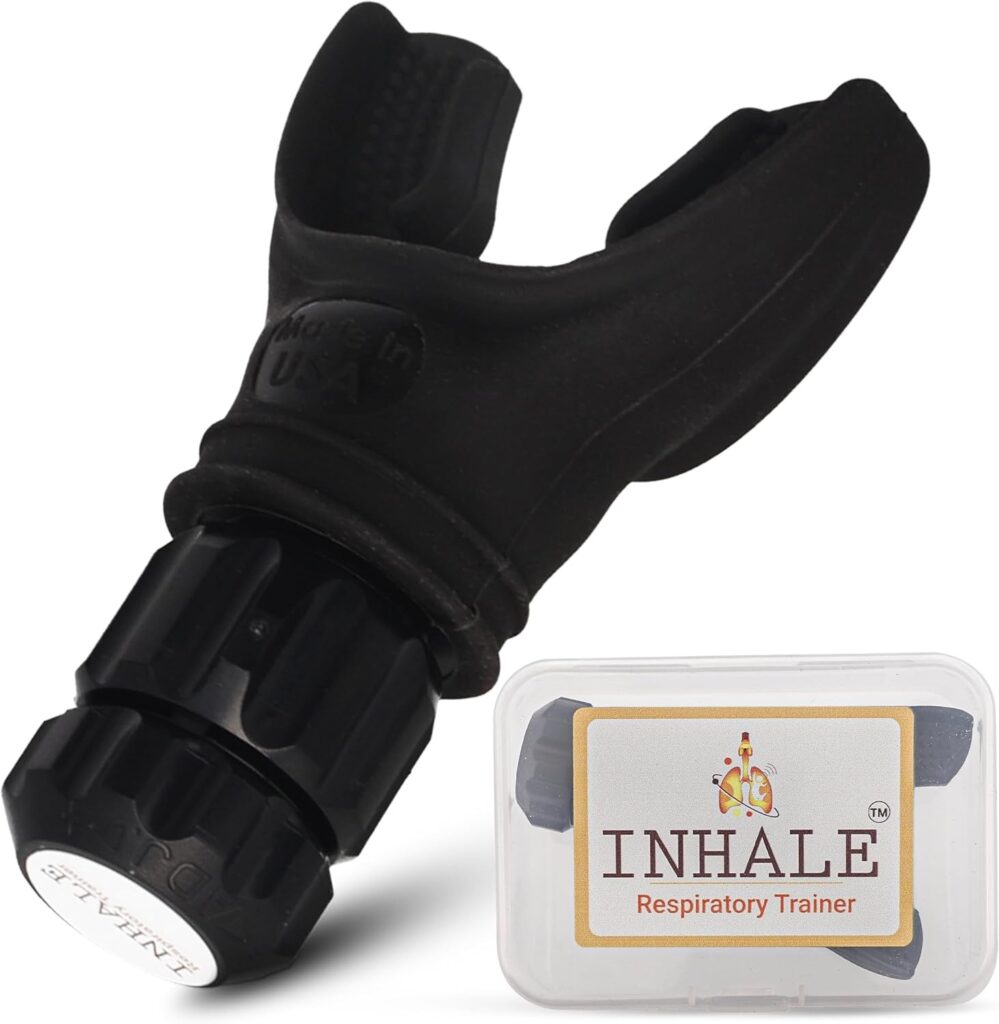Whether you’re a seasoned runner or just starting out, breathing efficiently can make all the difference between an energizing run and one that leaves you gasping for air.
Many runners struggle with shortness of breath, side stitches, or fatigue, all of which can stem from improper breathing techniques or poor respiratory conditioning.
The good news?
With the right training and a few mindful adjustments, you can strengthen your breathing and boost endurance naturally.
In this post, we will explore 5 ways to improve your breathing during running, starting with what causes shortness of breath.
Let’s dive in!
What Causes Shortness of Breath While Running?
Shortness of breath during running often occurs when the respiratory system can’t keep up with your muscles’ oxygen demands.
Factors like shallow breathing, poor posture, or a weak diaphragm can restrict airflow and make your body work harder.
Additionally, anxiety, dehydration, and lack of cardiovascular conditioning can worsen the sensation of breathlessness.
Improving respiratory efficiency and lung capacity can help you sustain longer, more enjoyable runs.
5 Ways to Improve Breathing For Running
1. Use a Respiratory Trainer
A respiratory trainer used outside of your running sessions is one of the best tools to enhance your breathing efficiency and lung strength.
It helps train your diaphragm and intercostal muscles, key players in healthy breathing, by providing adjustable resistance as you inhale and exhale.
Over time, this resistance training increases lung capacity, strengthens respiratory muscles, and improves oxygen exchange.
Using a respiratory trainer for just 5–10 minutes a day can help you take deeper, more controlled breaths during runs and recover faster between intervals.
Out of all of the respiratory trainers I’ve tried, Inhale’s Respiratory Trainer is my personal favorite.
This Respiratory Trainer is my go-to tool for improving breathing during runs because it combines effectiveness, comfort, and durability in one compact design.
Made from pure medical-grade silicone, it’s flexible, easy to clean, and built for long-term use without irritation or discomfort.
I love that it features adjustable resistance, allowing me to customize my training and gradually build lung strength at my own pace.
Plus, its portable case makes it convenient to take anywhere, so I can easily fit a quick breathing workout into my day, whether I’m at home or warming up before a run.
Simply follow the instructions and you’re good to go!
2. Practice Diaphragmatic Breathing
Many runners unconsciously breathe from their chest, which limits oxygen intake.
Diaphragmatic or “belly breathing” helps draw air deep into the lungs, maximizing oxygen exchange and endurance.
To practice, place one hand on your chest and the other on your belly – your belly should rise and fall more than your chest as you breathe.
Incorporating this technique into your warm-ups or slower runs can train your body to breathe more efficiently during intense sessions.
3. Focus on Proper Posture
Good posture plays a vital role in how well you breathe while running.
Slouching compresses the diaphragm and restricts airflow, while an upright posture keeps the lungs open and the chest expanded.
Keep your shoulders relaxed, head up, and chest lifted slightly forward.
Maintaining proper posture allows oxygen to flow freely and helps reduce the strain on your respiratory system.
4. Warm Up and Cool Down Correctly
Jumping straight into a run without a warm-up can shock your respiratory system and cause shortness of breath.
Begin with 5–10 minutes of dynamic movements like walking lunges, leg swings, and light jogging to gradually raise your heart rate and open your airways.
After your run, include a cool-down routine with deep breathing exercises and stretching to help your body return to a relaxed state and prevent post-run breathlessness.
5. Stay Hydrated and Avoid Overexertion
Hydration is key to maintaining optimal lung and muscle function.
Dehydration can thicken mucus in the airways, making it harder to breathe efficiently.
Drink water before, during, and after your run, and pace yourself to avoid pushing beyond your current endurance level.
Gradual progression in training will condition your respiratory system and reduce the risk of fatigue or shallow breathing.
Improving Your Breathing While Running
Improving your breathing during running takes practice, consistency, and the right approach.
From strengthening your respiratory muscles with a trainer to practicing diaphragmatic breathing and maintaining good posture, small daily habits can lead to major improvements in endurance and performance.
With time, your runs will feel smoother, your breathing easier, and your body stronger with every stride.
Thank you for reading!
Affiliate Disclosure
Some of the links on this site are affiliate links. This means that if you click on the link and purchase the item, we may receive an affiliate commission at no extra cost to you. I only recommend products or services that I believe will add value to my readers, however, some (not all) do pay us to be on this blog. Your support and theirs help keep this blog running, and I genuinely appreciate it.
Medical Disclaimer
The information provided on this website is for educational purposes only and is not intended as medical advice. This blog or the writer is not a licensed healthcare professional, and the content should not be used as a substitute for professional medical diagnosis, treatment, or advice. Always consult with your physician or other qualified healthcare provider before starting any new treatment or making any changes to your healthcare routine.
